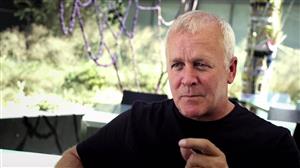Innovator

John Picard began his professional career as an architect building homes. The elegant homes sparked a passion for Picard: to build big and beautifully with balance. Picard’s environmental conscience and knowledge stem from his love for the ocean. He has an avid passion for both surfing and diving. In 1990, Picard used his own home in Playa del Rey, California as a lab where he began building his Greene Avenue off-the-grid wonder house. Picard’s original re-use home was so cutting edge that the National Enquirer stopped by for a photo op to share his design with the world. Recognized for his innovation and creativity, John soon built and re-built homes for Hollywood executives, helped to green the film industry, and received calls from Fortune 500 companies around the globe requesting his expertise to help them envision and implement sustainable business solutions.
In 1993, Picard’s insights and practical energy solutions were instrumental in the Greening of the White House during Clinton’s presidency. The Greening of the White House gave birth to the U.S. Green Building Council, known today as the most influential and fastest growing non-profit in the world. In 1994, John persuaded Interface CEO Ray Anderson to advance his petro-based carpet company by making it sustainable. Booming from success for its sustainable choices, today Interface is the most studied, emulated, and profitable sustainable business in the world. When Gap, Inc. asked John to conceive a retail store with the ultimate innovative sustainable features, John convinced Gap, Inc. CEO Don Fisher to move away from bricks and mortar and to transition towards online retailing, sparking a merchandising revolution that redefined American business.
John continues to translate many of his most innovative ideas into successful projects for commercial buildings, college campuses, and even entire towns by explaining the elegant principles of Natural Systems Designs. Among these design projects, Picard helped design and build the Grand Wailea in Maui, Hawaii, the first greening of a world-renowned resort. He directed sustainability practice in a 20-million-square-foot mixed-use development called Atlantic Station, the largest sustainability project in the U.S. at the time. He also conceived the first entirely sustainable airport facility called Hangar 25 in Burbank, California.
John’s interest in the arts and culture led him to design and engineer the sustainability effort in his partnership with Gregory Colbert for Colbert’s traveling film and photo exhibit Ashes and Snow. More recently, Picard was featured as the “green prophet” in the Discovery Channel docuseries, Greensburg, which currently airs on Discovery Channel’s Planet Green. Today John Picard balances his consulting work with personal appearances, advancing ideas that promote innovation and sustainable solutions in every sector of the new economy.

